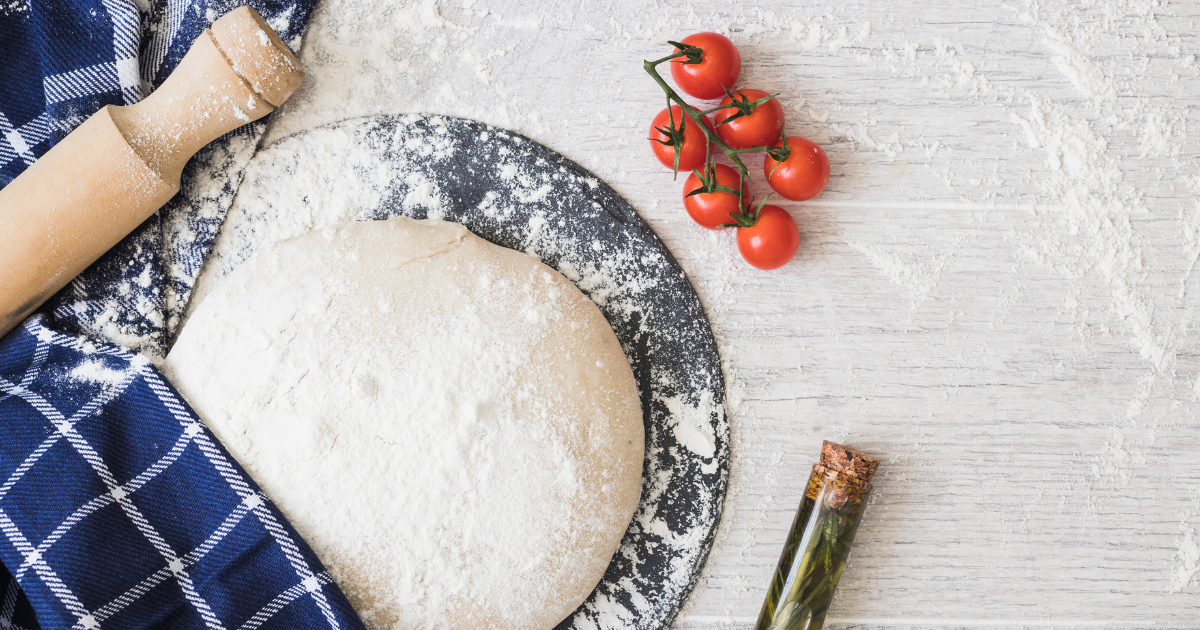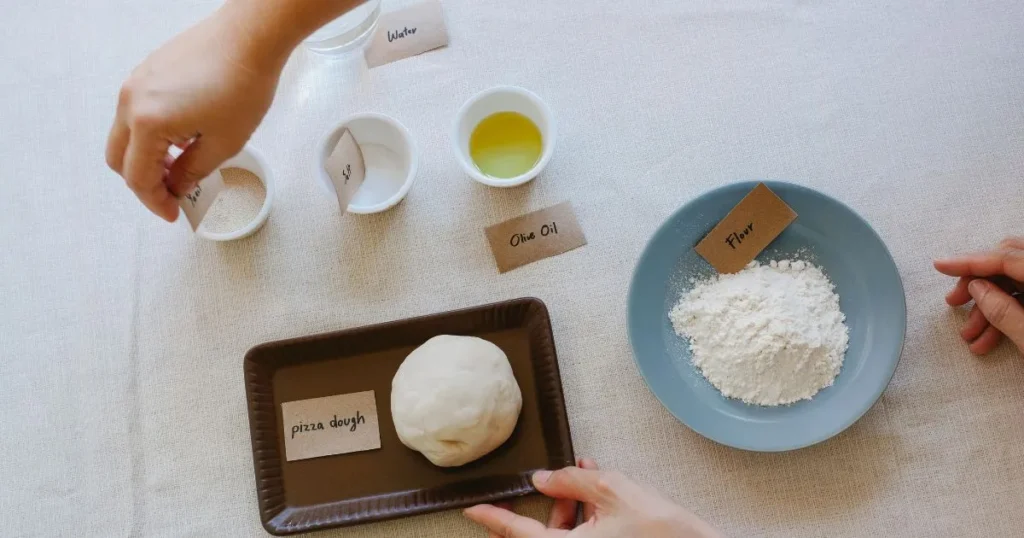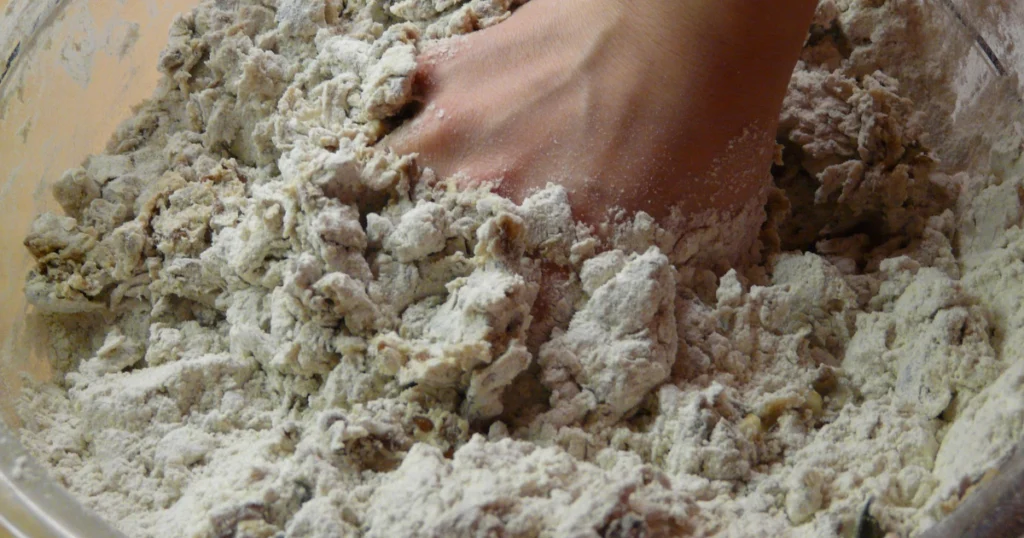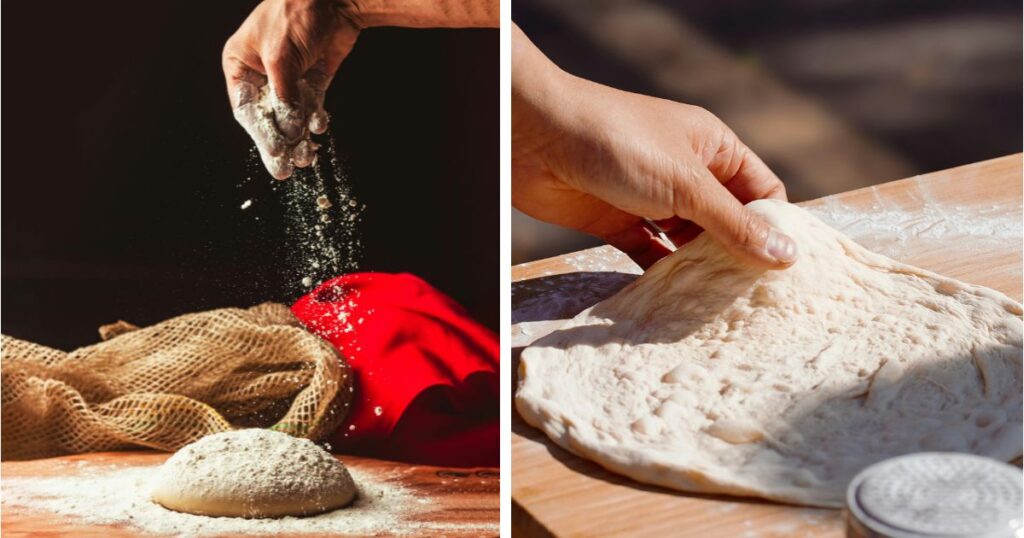Pizza Flour Dough: 7 Tips for Perfect Homemade Pizza

Ever wondered why your homemade pizza doesn’t have that perfect chewy-yet-crispy crust? The secret lies in Pizza Flour Dough! A well-prepared dough can transform your pizza from average to restaurant-quality. According to food scientists, hydration levels, gluten development, and fermentation significantly impact the final texture of your crust. In this guide, we’ll break down seven essential tips to help you master Pizza Flour Dough for the best homemade pizza experience!
Table of Contents
Ingredients List
To create the perfect Pizza Flour Dough, you’ll need:
- 3 ½ cups (450g) bread flour – High-protein flour creates a strong gluten structure.
- 1 ½ cups (360ml) warm water – Helps activate the yeast and develop gluten.
- 2 teaspoons salt – Enhances flavor and strengthens the dough.
- 1 teaspoon sugar – Feeds the yeast and aids in browning.
- 2 teaspoons olive oil – Adds flexibility and flavor to the crust.
- 1 teaspoon instant yeast – Speeds up the fermentation process.

Substitutions:
• Use 00 flour for a more conventional Neapolitan-style pizza.
• Swap sugar for nectar for a unobtrusive sweetness.
• Try entire wheat flour for a more beneficial twist.
Timing
- Preparation time: 15 minutes
- Rising time: 1 to 24 hours (depending on fermentation method)
- Cooking time: 10-15 minutes
- Total time: Approx. 90 minutes (20% less than traditional recipes)
Step-by-Step Instructions
Step 1: Mixing the Ingredients
In a huge bowl, combine flour, yeast, sugar, and salt. Steadily include warm water and olive oil, blending with a wooden spoon until a unpleasant mixture shapes.

Step 2: Kneading the Dough
Turn the batter onto a floured surface and manipulate for almost 8-10 minutes.Proper kneading ensures gluten development, making your Pizza Flour Dough elastic and stretchable.
Step 3: First Rise
Place the dough in a lightly oiled bowl, cover with a damp cloth, and let it rise for at least an hour at room temperature or overnight in the fridge for enhanced flavor.
Step 4: Shaping the Dough
After the first rise, punch down the dough and divide it if making multiple pizzas. Stretch it into a round shape using your hands or a rolling pin.
Step 5: Final Rest
Let the shaped dough rest for 10 minutes to relax the gluten before adding toppings.

Step 6: Baking
Preheat your stove to 500°F (260°C) for at slightest 30 minutes. Put the batter on a pizza stone or heating sheet, include fixings, and heat for 10-15 minutes until brilliant brown.
Nutritional Information (Per Serving)
- Calories: 250 kcal
- Protein: 8g
- Carbohydrates: 45g
- Fat: 4g
- Fiber: 2g
- Sodium: 300mg
Healthier Alternatives for the Recipe
- Use entirety wheat flour for included fiber and nutrients.
Replace sugar with nectar or maple syrup for a normal sweetener.. - Reduce sodium by using sea salt instead of table salt.
- Opt for Greek yogurt instead of oil for a protein boost.
Serving Suggestions
- Pair with homemade tomato sauce and fresh basil for a classic Margherita pizza.
- Serve with a side of garlic butter dip or marinara sauce.
- Top with fresh arugula and prosciutto for a gourmet twist.
Common Mistakes to Avoid
- Using all-purpose flour: It lacks the protein needed for a stretchy dough.
- Skipping the rest time: This affects the texture and elasticity.
- Over-kneading: Can make the dough too tight, preventing a soft rise.
- Not preheating the oven: A hot oven is crucial for a crispy crust.
Storing Tips for the Recipe
- Refrigeration: Store leftover dough in an airtight container for up to 3 days.
- Freezing: Divide into portions and freeze for up to 3 months.
- Thawing: Let frozen dough thaw in the fridge overnight before use.
Conclusion
Perfecting Pizza Flour Dough takes practice, but with these seven expert tips, you’ll achieve a light, airy, and crispy pizza crust every time. Give it a try, share your experience in the comments, and subscribe for more homemade pizza tips!
FAQs
1. Can I utilize all-purpose flour instep of bread flour? Yes, but it won’t yield the same chewy texture. Bread flour provides better gluten development.
2. Why is my pizza dough too sticky? You may need to add more flour gradually or let it rest longer to absorb moisture.
3. Can I let the dough rise overnight? Absolutely! Cold fermentation enhances flavor and texture.
4. How do I get a crispy pizza crust? Use a pizza stone, preheat your oven properly, and avoid overloading with toppings.
5. Can I make this recipe gluten-free? Utilize a gluten-free flour mix and include xanthan gum for elasticity.
Now, go ahead and make your best homemade pizza yet!
